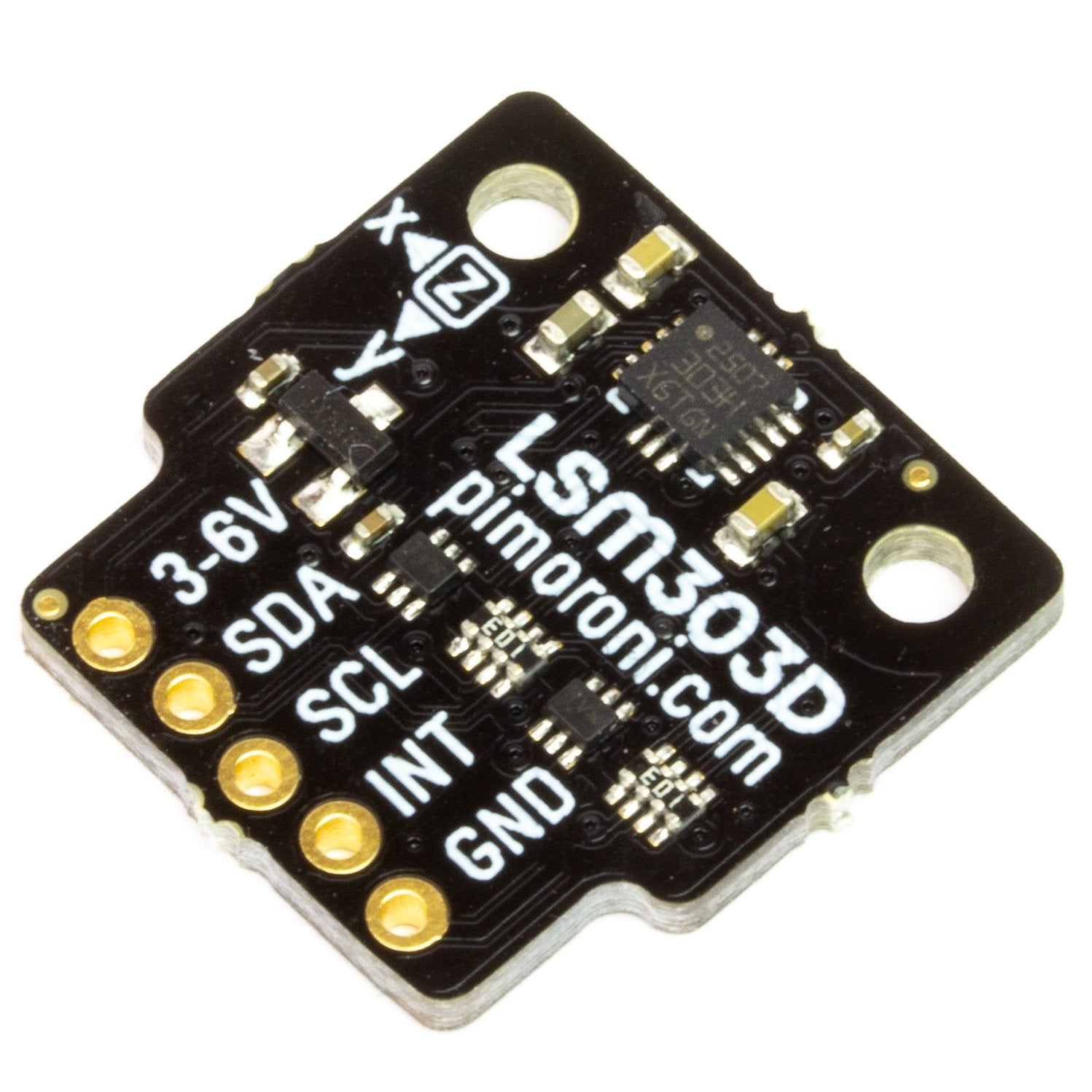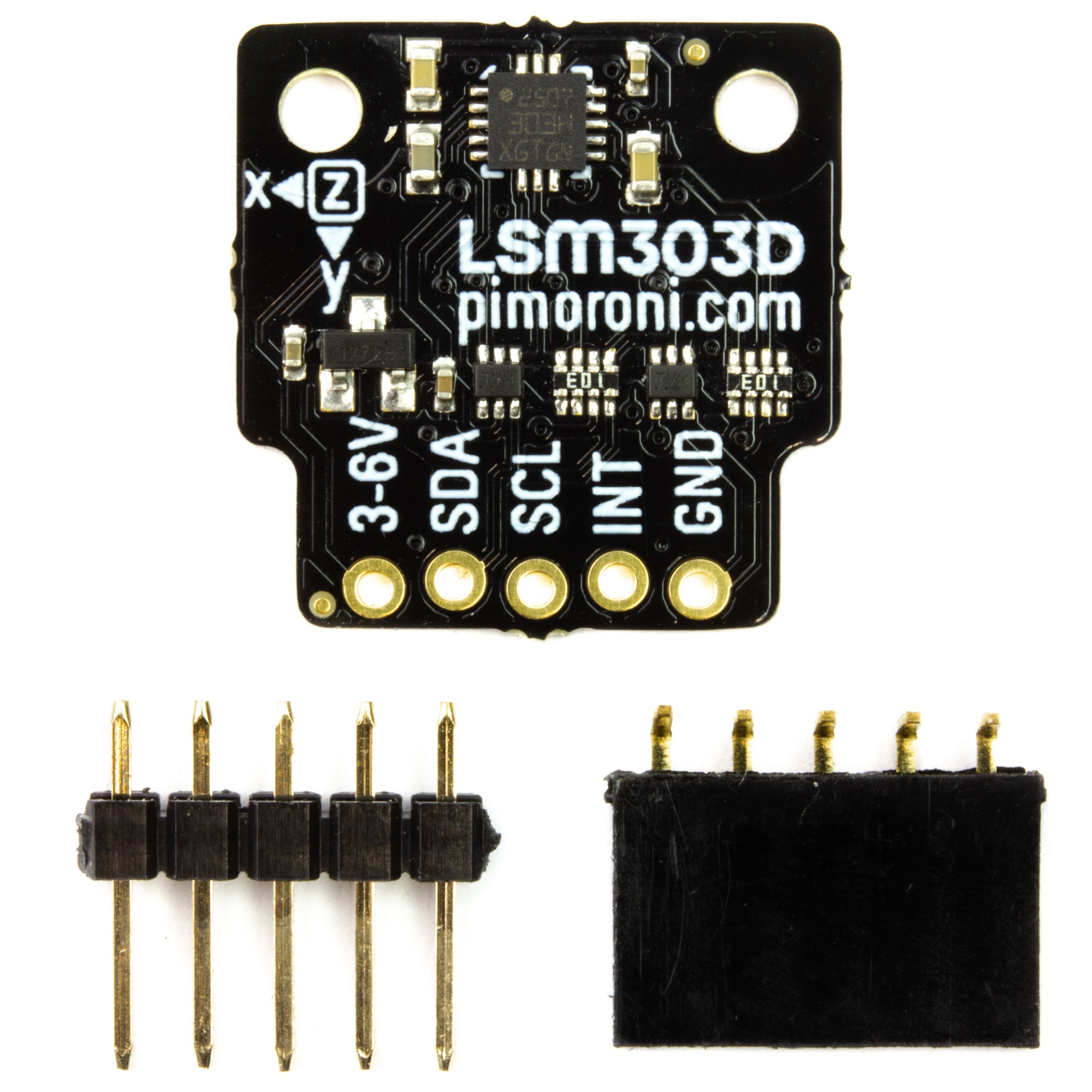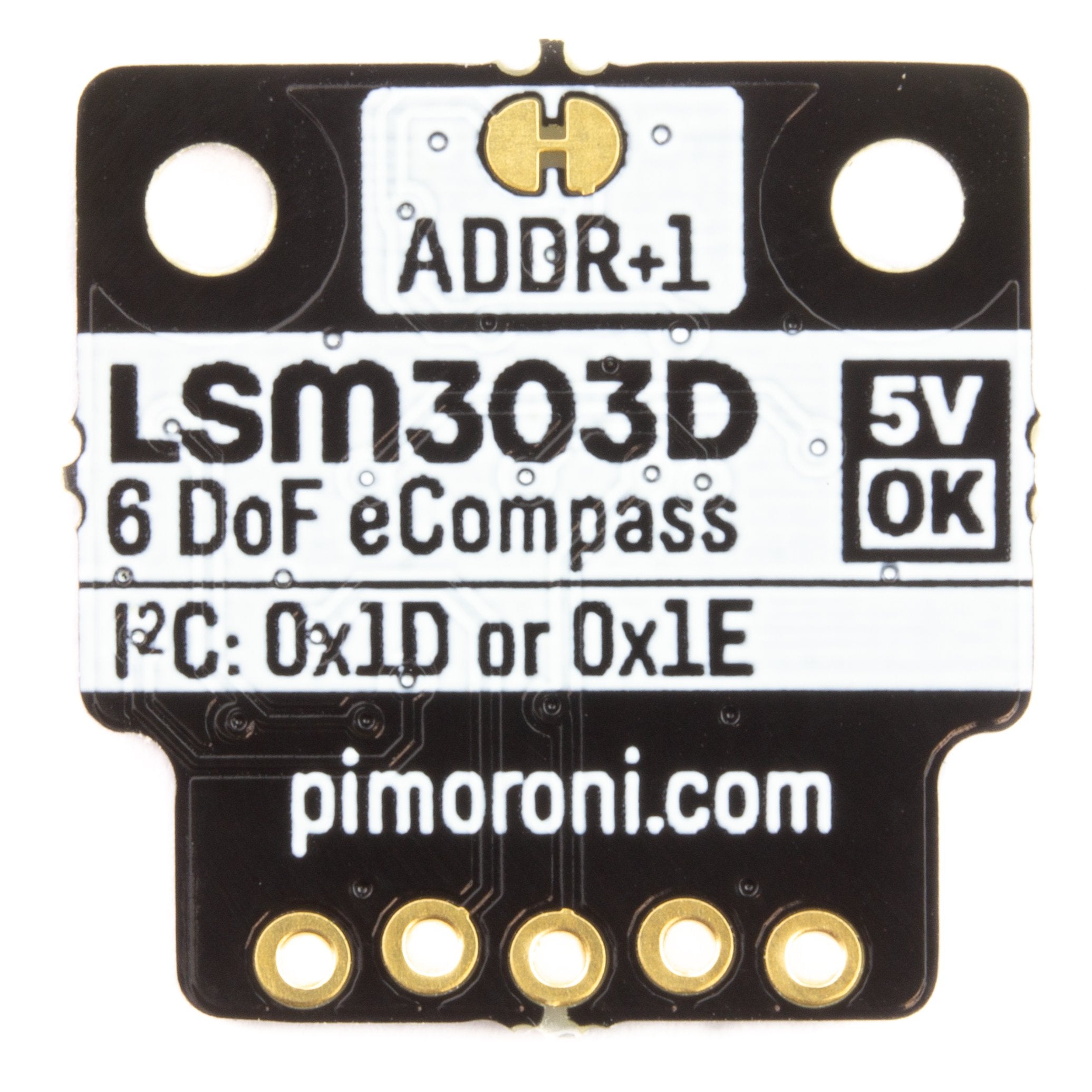Das Produkt ist End of Life (EOL) bedeutet, er wird nicht mehr hergestellt!
Dieser Breakout-Bewegungssensor mit 6 Freiheitsgraden kann die Beschleunigung in drei Achsen - X, Y und Z - sowie drei Achsen der magnetischen Richtung erfassen. Er ist ideal für den Einbau in Roboter, Raketen und Rover oder überall dort, wo Sie Bewegungen genau messen möchten. Er ist mit Raspberry Pi oder Arduino kompatibel.
Der LSM303D 6DoF Breakout hat eine I2C-Schnittstelle und ist 3,3V oder 5V kompatibel. Wie unsere anderen Pimoroni-Ausbrüche Wir haben ihn so konzipiert, dass Sie ein Stück rechtwinkligen Stecker anlöten und ihn dann direkt auf die unteren linken 5 Pins des GPIO-Steckers Ihres Raspberry Pi stecken können (Pins 1, 3, 5, 6, 9).
Es ist auch kompatibel mit unserer neuen, schicken Breakout Garten Die Verwendung von Breakouts ist so einfach wie das Einstecken in einen der sechs Slots und das Wachsen des Projekts, das Erstellen und der Code.
Eigenschaften
- LSM303D 6DoF-Bewegungssensor
- ±2/±4/±8/±12 Gauss magnetische Skala
- ±2/±4/±6/±8/±16 g lineare Beschleunigung
- 16-Bit-Datenausgabe
- 3,3V oder 5V kompatibel
- I2C-Schnittstelle, mit Adressauswahl über ADDR cuttable trace (0x1D oder 0x1E)
- Schutz vor Verpolung
- Raspberry Pi-kompatible Pinbelegung (Pins 1, 3, 5, 7, 9)
- Kompatibel mit Raspberry Pi 3B+, 3, 2, B+, A+, Zero, und Zero W
- Python-Bibliothek
- Datenblatt
Der Bausatz enthält
- LSM303D 6DoF Bewegungssensor Breakout
- 1x5 Stiftleiste
- 1x5 rechtwinklige Buchsenleiste
Software
Wir haben eine Reihe von Python-Bibliothek mit dem Sie Daten von Ihrem LSM303D 6DoF Breakout auslesen können, und ein einfaches Einzeleinbau-Programm, um alles zu installieren.
Unsere Software unterstützt Raspbian Wheezy nicht.
Anmerkungen
- Die Leiterbahn zwischen den Lötpads (markiert mit ADDR) kann durchtrennt werden (vorsichtig mit einem Bastelmesser), um die I2C-Adresse von der Standardeinstellung 0x1D auf 0x1E zu ändern, was bedeutet, dass Sie bis zu zwei Sensoren an demselben Raspberry Pi oder Arduino verwenden können. Wenn geschnitten, können die Pads wieder durch Löten überbrückt werden, um die Adresse auf 0x1D zurückzusetzen.
- Abmessungen: 19x19x3mm
English Description
This 6 Degrees of Freedom Motion Sensor Breakout can detect acceleration in three axes - X, Y, and Z - as well as three axes of magnetic heading. It's ideal for building into robots, rockets, and rovers, or anywhere else where you want to measure motion accurately. It's compatible with Raspberry Pi or Arduino.
The LSM303D 6DoF Breakout has an I2C interface and is 3.3V or 5V compatible. Like our other Pimoroni breakouts, we've designed it so that you can solder a piece of right-angle header onto it and then pop it straight onto the bottom left 5 pins on your Raspberry Pi's GPIO header (pins 1, 3, 5, 6, 9).
It's also compatible with our fancy new Breakout Garden, where using breakouts is as easy as just popping it into one of the six slots and starting to grow your project, create, and code.
Features
- LSM303D 6DoF Motion Sensor
- ±2/±4/±8/±12 gauss magnetic scale
- ±2/±4/±6/±8/±16 g linear acceleration
- 16 bit data output
- 3.3V or 5V compatible
- I2C interface, with address select via ADDR cuttable trace (0x1D or 0x1E)
- Reverse polarity protection
- Raspberry Pi-compatible pinout (pins 1, 3, 5, 7, 9)
- Compatible with Raspberry Pi 3B+, 3, 2, B+, A+, Zero, and Zero W
- Python library
- Datasheet
Kit includes
- LSM303D 6DoF Motion Sensor Breakout
- 1x5 male header
- 1x5 female right angle header
Software
We've put together a Python library that you can use to read data from your LSM303D 6DoF Breakout, and an easy one-line installer to install everything.
Our software does not support Raspbian Wheezy.
Notes
- The trace between the solder pads (marked ADDR) can be cut (carefully with a craft knife) to change the I2C address from the default of 0x1D to 0x1E, meaning that you can use up to two sensors on the same Raspberry Pi or Arduino. If cut, the pads can be bridged again by soldering to reset the address to 0x1D.
- Dimensions: 19x19x3mm



